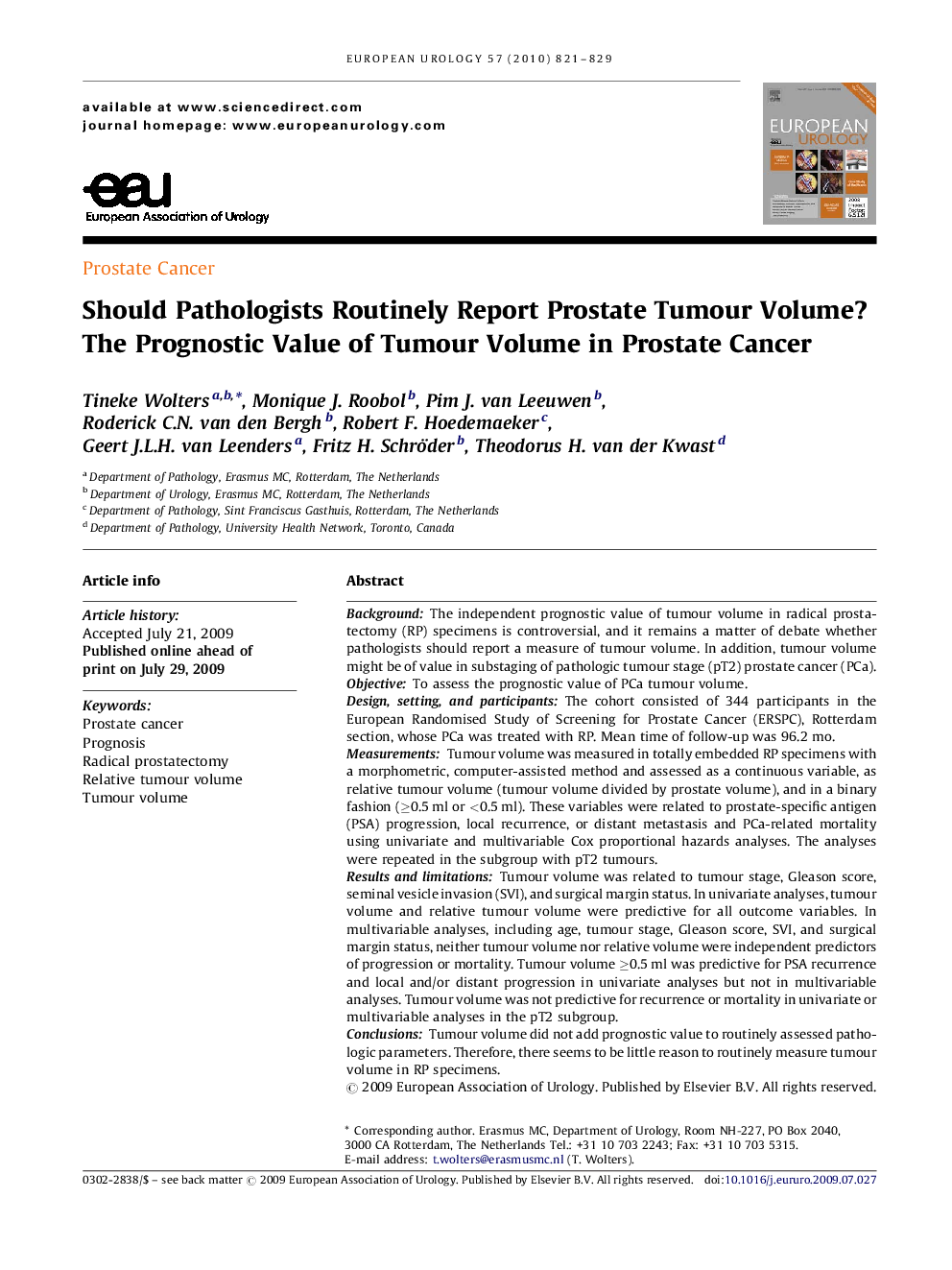| Article ID | Journal | Published Year | Pages | File Type |
|---|---|---|---|---|
| 3927988 | European Urology | 2010 | 9 Pages |
BackgroundThe independent prognostic value of tumour volume in radical prostatectomy (RP) specimens is controversial, and it remains a matter of debate whether pathologists should report a measure of tumour volume. In addition, tumour volume might be of value in substaging of pathologic tumour stage (pT2) prostate cancer (PCa).ObjectiveTo assess the prognostic value of PCa tumour volume.Design, setting, and participantsThe cohort consisted of 344 participants in the European Randomised Study of Screening for Prostate Cancer (ERSPC), Rotterdam section, whose PCa was treated with RP. Mean time of follow-up was 96.2 mo.MeasurementsTumour volume was measured in totally embedded RP specimens with a morphometric, computer-assisted method and assessed as a continuous variable, as relative tumour volume (tumour volume divided by prostate volume), and in a binary fashion (≥0.5 ml or <0.5 ml). These variables were related to prostate-specific antigen (PSA) progression, local recurrence, or distant metastasis and PCa-related mortality using univariate and multivariable Cox proportional hazards analyses. The analyses were repeated in the subgroup with pT2 tumours.Results and limitationsTumour volume was related to tumour stage, Gleason score, seminal vesicle invasion (SVI), and surgical margin status. In univariate analyses, tumour volume and relative tumour volume were predictive for all outcome variables. In multivariable analyses, including age, tumour stage, Gleason score, SVI, and surgical margin status, neither tumour volume nor relative volume were independent predictors of progression or mortality. Tumour volume ≥0.5 ml was predictive for PSA recurrence and local and/or distant progression in univariate analyses but not in multivariable analyses. Tumour volume was not predictive for recurrence or mortality in univariate or multivariable analyses in the pT2 subgroup.ConclusionsTumour volume did not add prognostic value to routinely assessed pathologic parameters. Therefore, there seems to be little reason to routinely measure tumour volume in RP specimens.
